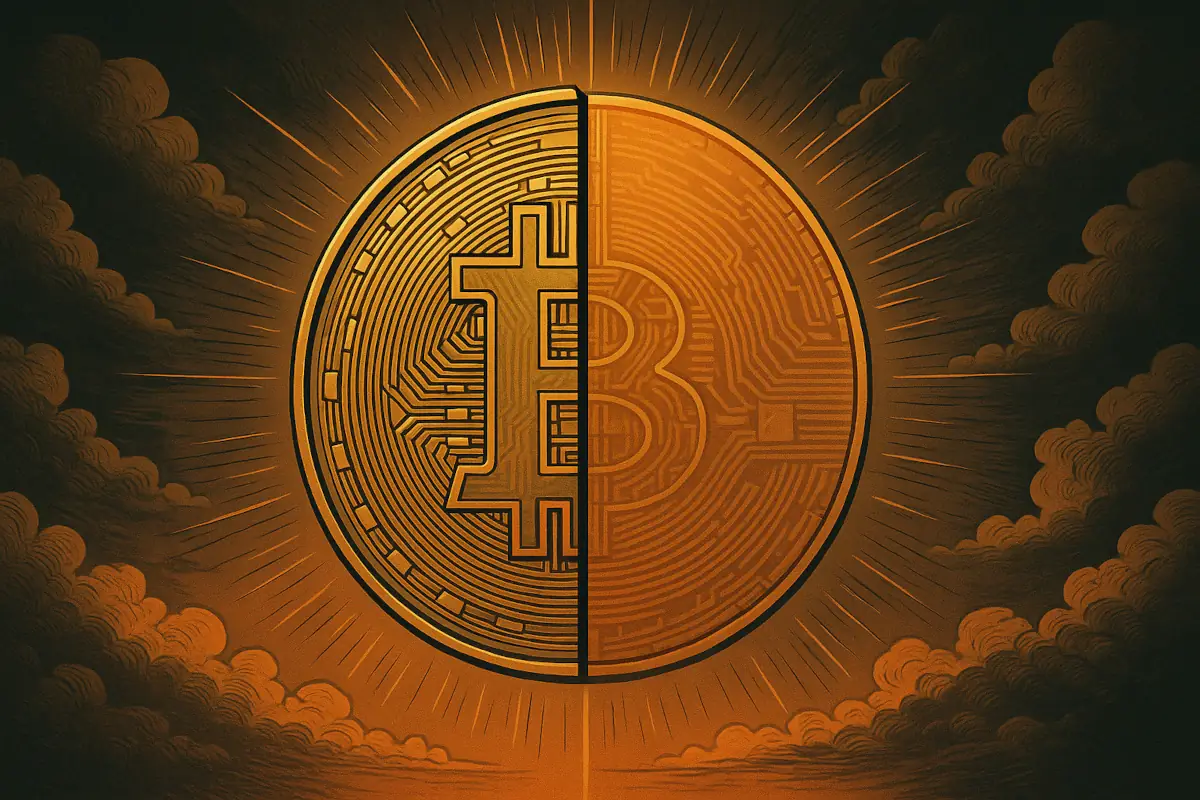The historic collapse of Terra’s LUNA and its sister token UST in 2022 shook the crypto market. What started as one of the most ambitious experiments in the decentralized finance sector quickly spiraled into one of its most disastrous implosions.
Within weeks, a project that reached over $60 billion in value (comparable to the current Solana market cap) came crashing down, unraveling years of trust, billions in savings, and a vision that promised to reshape finance. Here’s how it all unfolded – from its meteoric rise to the systemic design flaws that triggered a domino effect no one could stop.
Table of Contents
LUNA’s Meteoric Rise – From 66 Cents to $104 in 14 Months
The Terra blockchain was designed by Terra Labs, based in South Korea, and led by Do Kwon, a Stanford-educated computer scientist. The system included two main tokens: LUNA and TerraUSD (UST).
These digital currencies were built to function together. LUNA was intended to keep UST, a stablecoin pegged to the U.S. dollar, stable through a delicate balancing act of minting and burning.
This wasn’t just another crypto project. The idea gained serious traction. By March 2022, UST had swelled from $180 million at the start of 2021 to a market cap nearing $15 billion. At the same time, LUNA’s price had exploded from $0.66 to a high of $104.58 on March 9, 2022. Even as other markets were retreating due to geopolitical tensions, Terra stood tall.
In February 2022, Terra’s DAO inked a $40 million sponsorship deal with the Washington Nationals baseball team. There was talk of UST being accepted at stadiums. This was no longer niche finance – this was going mainstream.
How the Model Was Supposed to Work
At the heart of Terra’s system was an algorithm. Unlike traditional stablecoins like USDT and USDC, which are backed by real-world assets, UST maintained its peg using LUNA. When UST traded above $1, users could swap $1 worth of LUNA to mint UST and profit from the difference.
If UST dropped below $1, the reverse would happen – UST could be exchanged for $1 of LUNA. This back-and-forth created arbitrage opportunities and supposedly kept the system in balance.
It worked, for a while. UST became the fourth-largest stablecoin in the world. LUNA became one of the top 10 cryptocurrencies. Anchor Protocol, the platform where UST could earn around 20% interest, lured in billions from users looking for passive income.
By early 2022, critics had begun warning about this fragility. A paper from the University of Calgary noted that algorithmic stablecoins “are inherently fragile” and live “in a state of perpetual vulnerability.”
When Anchor’s 20% yield became unsustainable and began to drop, fear entered the equation. Confidence – the only glue holding it all together – began to weaken.
Singapore-based Luna Foundation Guard (LFG) tried to restore faith by securing $1 billion in Bitcoin reserves to protect the peg. But that was too little, too late.
LUNA Collapse
In May 2022, it happened. A massive sell-off of UST began. As its price dropped below $1, investors rushed to exit. To maintain the peg, more and more LUNA had to be minted. But minting more LUNA meant diluting its value. The price of LUNA plunged. As it fell, the system printed even more LUNA, triggering a hyperinflationary spiral.
The numbers became staggering. LUNA’s supply skyrocketed from 345 million to over 6.5 trillion in just days. Its price collapsed to nearly zero. UST, once a proud $15 billion asset, couldn’t hold the peg and dropped below 10 cents.
Investors watched their life savings vanish. Billions were erased from the market almost overnight. The entire Terra ecosystem – with all its projects and partnerships – fell apart.
What Remained After the Fall
By June 2022, Terra was effectively dead. Exchanges delisted both UST and LUNA. Major DeFi protocols built on Terra were abandoned. Anchor, Chai, and Mirror – all poster children of the Terra dream — were rendered useless.
The U.S. Securities and Exchange Commission stepped in. It served a subpoena to Do Kwon over the Mirror Protocol, which allowed users to trade synthetic stocks like Apple and Tesla. Meanwhile, Kwon and Terraform Labs pushed back in court, challenging the SEC’s jurisdiction.
Public opinion turned sharply. The very idea of algorithmic stablecoins, once hailed as innovation, was now seen as recklessness. Terra’s collapse had ripple effects across the entire crypto sector, wiping out investor confidence and inviting deeper regulatory scrutiny.
What the Collapse Means for the Future
LUNA’s fall wasn’t just a single coin falling out of favor. It was the bursting of an idea – that decentralized algorithms could replace traditional central systems without consequence. The collapse forced investors, developers, and regulators to rethink how these systems should be built.
In the months following the crash, global regulators began tightening scrutiny on stablecoins. Questions about transparency, reserves, and accountability became central to any new project. And algorithmic stablecoins haven’t recovered their reputation since.
Read also: Mantra (OM) Crashes 90% in One Hour


![[QUIZ] Crypto History: Test Your Knowledge! Picture showing book with crypto logo](https://auriccrypto.com/wp-content/uploads/2025/05/Old_Bitcoin_Book_History_s.webp)

